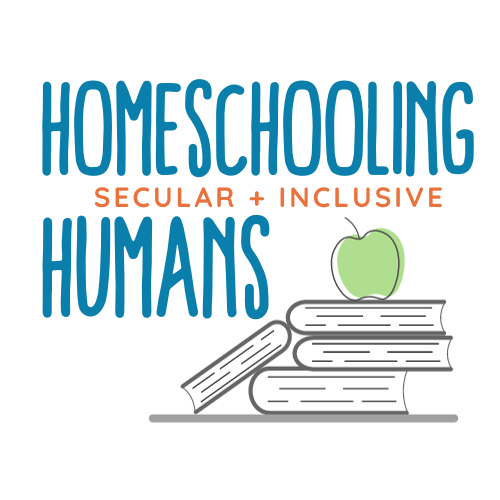New homeschooler? This guide to homeschooling for beginners gives you a step by step checklist to get started without getting overwhelmed!
If you would have told me in 2019 that I would be planning to homeschool, I would have laughed.
If you would have told me in January 2020, when some issues started becoming apparent at my children's school, I would have smiled, and said "maybe, but probably not."
If you would have told me in April 2020, after schools had shut down and I saw how my boys were thriving by learning at home, I would have said "Yes! But I have no idea where to start."
Beginning to homeschool is a roller coaster ride for sure. While the pandemic was the final push for our family, it wasn't the only factor in our decision to homeschool. No matter what the reason, choosing to start homeschooling is a huge decision, and one that can feel completely overwhelming at first.
When I began my journey as a homeschool mom, I had no idea where to start, but I knew I needed to make some kind of plan.
I'm a planner, and having a plan in place is a great way for me to manage my anxiety about the unknown.
My plans have changed more times than I care to admit, but I have learned a lot about how to get started with homeschooling. And I know that there are new homeschooling parents grappling with their school choices and trying to figure out how the heck does one even begin to homeschool. If that's you, you're in the right place.
But first, let me be clear. I'm not here to convince you that homeschooling is the right choice for your family. I am guessing that if you're reading this, you've already weighed your options and decided that it is.
I'm here to give you the benefit of my experience as a secular homeschooler, and to give you a step by step guide to planning your homeschool year from the beginning.
Need help as you go? Grab my FREE printable checklist below! You'll also join my email community to stay up to date with everything homeschool, including curriculum reviews, tips, and more.
I'm a planner, and having a plan in place is a great way for me to manage my anxiety about the unknown.
My plans have changed more times than I care to admit, but I have learned a lot about how to get started with homeschooling. And I know that there are new homeschooling parents grappling with their school choices and trying to figure out how the heck does one even begin to homeschool. If that's you, you're in the right place.
But first, let me be clear. I'm not here to convince you that homeschooling is the right choice for your family. I am guessing that if you're reading this, you've already weighed your options and decided that it is.
I'm here to give you the benefit of my experience as a secular homeschooler, and to give you a step by step guide to planning your homeschool year from the beginning.
Your Quick Start Guide to Homeschool Planning
I love planning. I started my first blog, Sunny Day Family, a decade ago with the goal of helping families plan fun activities and make the best of their time together. Now that homeschooling is a huge part of our family life, I've discovered the same step by step approach is helpful in planning our homeschoool year.
Need help as you go? Grab my FREE printable checklist below! You'll also join my email community to stay up to date with everything homeschool, including curriculum reviews, tips, and more.
Step One: Give Yourself Grace
I have heard from so many parents with worries about making the jump to homeschool.
We worry about making the best choice for our family.
We worry about our kids falling behind.
We worry about balancing academics and socialization.
So the very first thing I want to tell you is this: give yourself grace in this journey.
Again, it's not my job to tell you to homeschool or to send your kids to school. I want to help you navigate the decision that you've already made, or to give you some practical advice to help you make a decision.
But no matter what your kids do, I want YOU to do THIS.
Give yourself grace. Just the fact that you are here reading this means that you are invested in your child's future.
You're the only one who can make this decision for your family. There is no "right answer."
What I want you to focus on is doing the best you can with the circumstance that you are in right now.
With that in mind, let's walk through the steps you need to do to get started with homeschooling this year.
Step Two: Make it Legal
Homeschooling is legal in all 50 states, however, requirements in each state vary wildly.
This section only covers homeschool law in the United States. Residents of other countries, or U.S. citizens living abroad need to consult the laws of their area.
Some states require formal schooling to begin at age 5. Some require it at age 7.
Some states have little to no oversight, while others have very specific requirements.
It is absolutely imperative that you learn your state homeschool laws before you do anything else.
I recommend going straight to the source - your state or county's Department of Education website. They will have all of the most current regulations laid out for you. Make sure that you note any deadlines, forms, or other documentation that is required before beginning your homeschool journey.
Step Three: Get to Know Your Child's Learning Style
There is a lot of research about "learning styles" and to be honest, it's not very conclusive. But when you're researching homeschool curriculum, you'll see a lot of buzzwords describing kids as auditory, visual, or kinesthetic learners.
You'll also be bombarded with information about specific education styles: Charlotte Mason, Waldorf, Classical... it all seems overwhelming.
I suggest that you ignore the formal classifications (for now, while you are getting your feet wet) and focus on how your kids like to learn.
Do they prefer books or videos?
Are they engaged with online lessons?
Do they like crafts or hands on activities?
Need help? Try this super simple learning style quiz from Scholastic to help discover your child's learning style.
The truth is, an eclectic mix of things usually works for most kids. Pay attention to the activities that they prefer to get a sense of what type of learning would work best for them. Some kids might enjoy audiobooks for literature but need to get up and move when they are doing science. Focus on the kids in front of you, not on the labels.
Step Four: Consider Your Family Style
One of the amazing things about homeschooling is that learning becomes a part of your entire family, not just something that your kids do from 9-3 Monday through Friday. That's why your family culture should play a large part in your homeschooling decisions.
What does this mean?
First, the big one. Do you want to include religion in your homeschool? Many homeschool curricula have religious teachings or leanings, so you need to decide if this is something you want to embrace or avoid, and make your choices accordingly.
Beyond religion, think about the values that are important to your family. Is it important for you that your children learn non-whitewashed history? Do you want them to be exposed to diverse voices and experiences? If so, you need to make an effort to choose topics of study and curricula that amplify a wide variety of authors, creators, and subjects.
You may also want to consider your family's relationship with nature as you choose your course of study. Are you an all-season, outdoor loving family? Or more of a tech-friendly, indoor bunch? No matter what your family dynamic, you can customize your homeschool experience to fit YOU.
Step 5: Start Researching Curriculum
I'm not going to lie. This is the hard part. I have spent hours (and more money than I'd like to admit) researching homeschool curriculum. There are SO MANY OPTIONS and it feels like an endless rabbit hole once you get started.
I'm not going to recommend a specific curriculum here. You may find that an "all in one" curriculum is easiest when you are first starting out, however many homeschoolers prefer to find separate resources for each subject. What works for your kids in math might not work in language arts. You might find a science that you love but you need a different social studies focus. Feel free to look at all the different options!
Use the information that you pulled together in the previous steps to help you evaluate your choices, whether it's an all in one or a specific subject.
As you are browsing the endless possibilities of homeschool curriculum choices, keep these things in mind:
1. What are my state requirements? Does this curriculum allow me to meet them?
2. How do my kids like to learn? Will this curriculum engage them where they are?
3. Does this curriculum fit our family culture? Are my family's religious, cultural, and social needs being met?
Once you've narrowed down your choices based on these questions, then try some samples! Nearly every curriculum offers free sample lessons. Try a few out with your kids to see what engages and interests them before you make any big purchases. Believe me, most homeschoolers have a ton of unused curriculum so learn from us and try before you buy.
Once you've tried a few samples, you'll likely find something with that magical combination of academics that you approve and activities that your kids enjoy. If not, don't get discouraged! It can take a while to get that "just right" mix. And it seems that as soon as you do, something changes and you're back at the drawing board.
Step 6: Start a Routine
Once you've picked out your curriculum, you're ready to dive in! Don't feel pressure to do all the things right away. Flexibility is one of the joys of homeschool. You can start in August with the public schooling schedule, or try year round schooling. The school year is yours to design in the way that works for you.
You can start with one or two subjects and ease in gradually. See how things go, tweak things as you need, and remember to embrace this choice and make it your own. Before you know it, you'll feel like a veteran homeschooler. You've got this!


